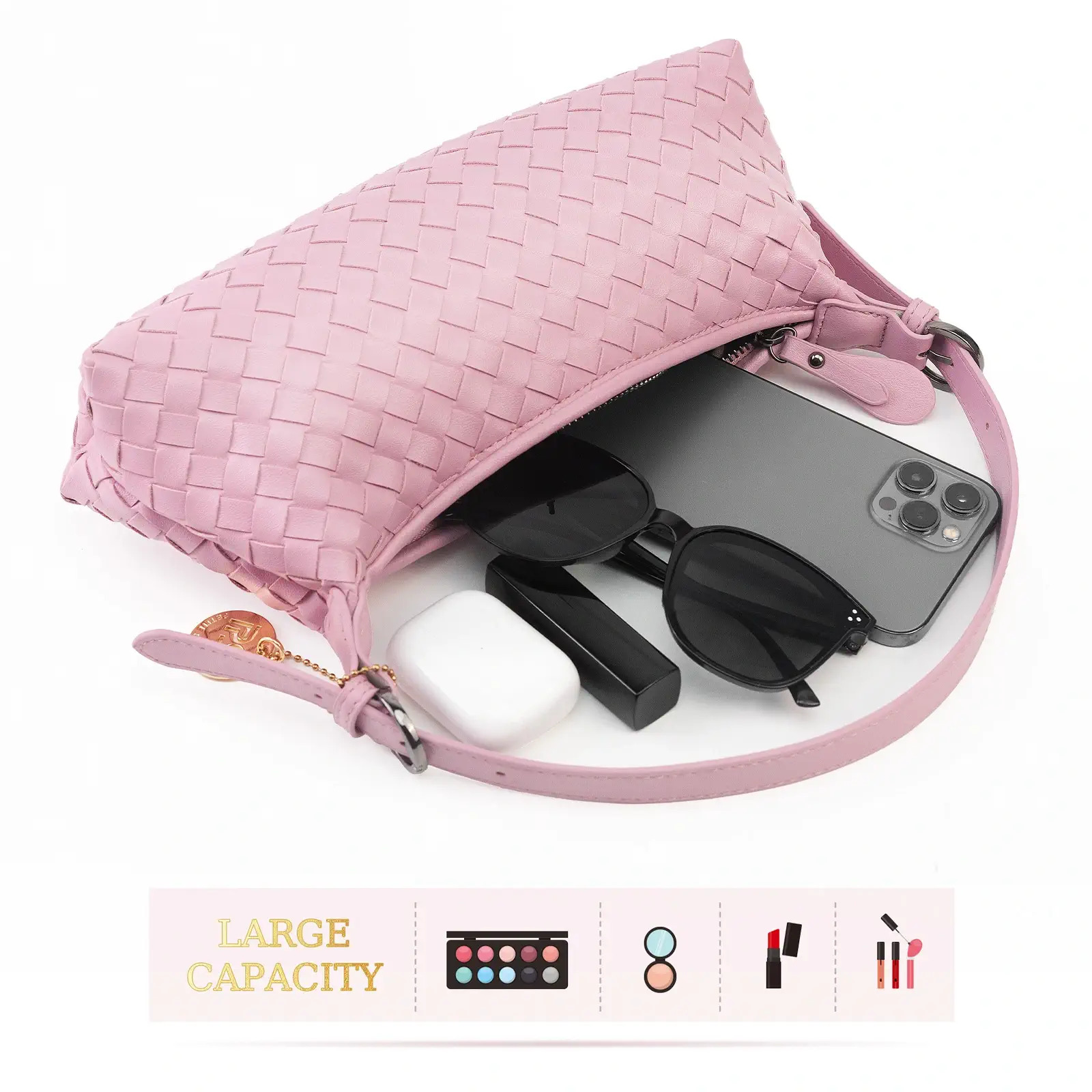HOME GUIDES HOW TO MEASURE A PURSE CORRECTLY: STEP-BY-STEP GUIDE FOR PERFECT SIZING
How to Measure a Purse Correctly: Step-by-Step Guide for Perfect Sizing
Written by Erin Sullivan
When it comes to purchasing a purse, size matters. Whether you're looking for a small crossbody bag for everyday use, a spacious tote for work, or a sleek clutch for a night out, understanding how to measure a purse properly can ensure that you choose the right bag for your needs.
Many people overlook the importance of getting the right dimensions when shopping online or in-store, which can lead to dissatisfaction with the fit, style, or functionality of the purse.
In this guide, we'll walk you through the key measurements you need to know to accurately assess a purse's size. We'll cover everything from the length, width, and height, to more specific measurements like depth and strap lengths.
By the end of this article, you'll have a clear understanding of how to measure a purse correctly, ensuring you can make an informed decision when selecting the perfect bag for your lifestyle.
1. The Basic Measurements of a Purse
When measuring a purse, the three primary dimensions you need to consider are length, height, and width. Each of these measurements plays a crucial role in determining the overall size of the purse, its capacity, and how well it fits your everyday needs. Let's break them down to ensure you can measure your purse accurately.
1.1 Measuring the Length of the Purse
The length is typically the most straightforward measurement and is taken horizontally across the purse. To measure the length, place the purse flat on a surface and measure from one end to the other, across the widest part of the purse. This is the distance from the left side of the bag to the right side, excluding any handles or straps that protrude outward.
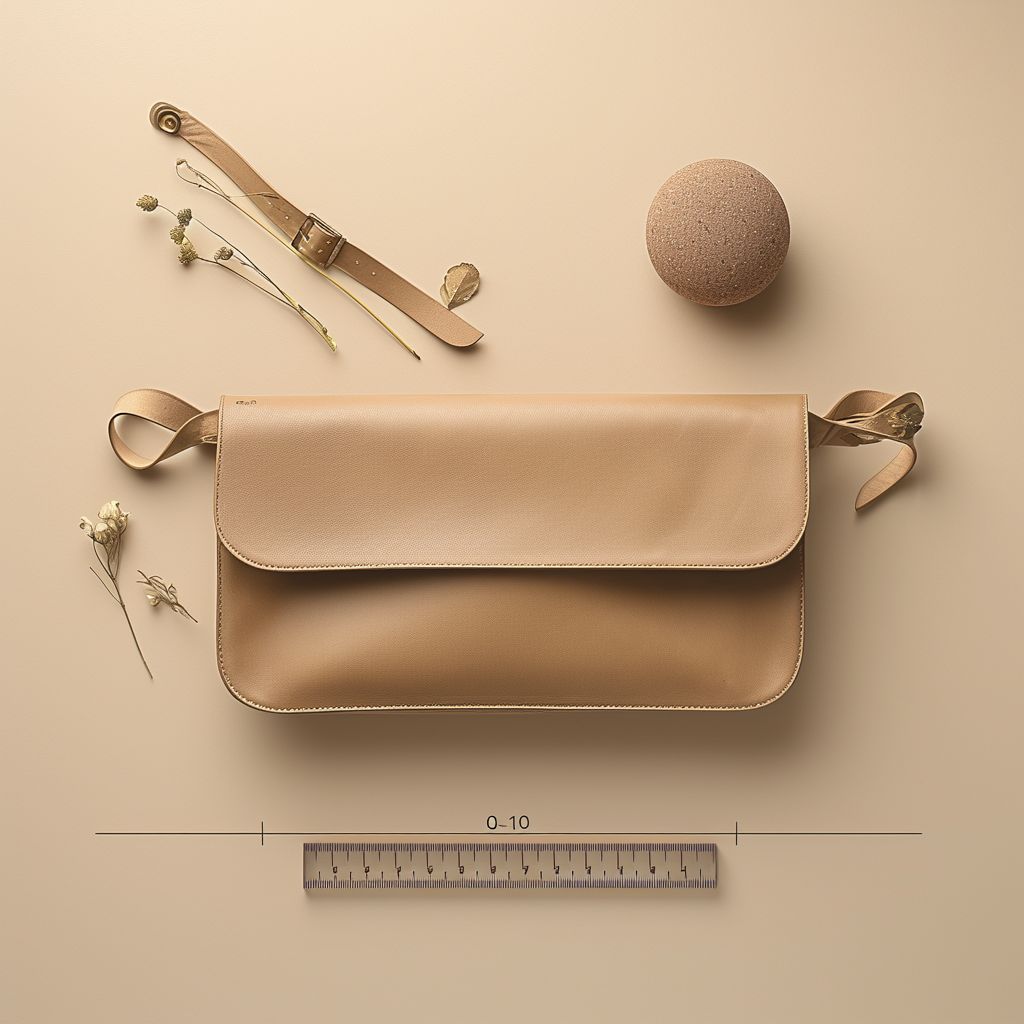
Why it matters: The length of a purse determines how much surface area is available inside for your belongings. A longer purse can accommodate larger items, such as a wallet, phone, and keys, and it usually indicates a larger bag overall.
Tips for accuracy:
- Make sure the purse is lying flat and not warped or stretched out.
- For crossbody bags or shoulder bags, measure along the base of the purse rather than from the top edge, as the sides of the bag can sometimes taper inward.
Example: A standard shoulder bag might have a length of 12-15 inches, while a larger tote bag can range from 16 to 20 inches in length.
1.2 Measuring the Height of the Purse
Next, you'll need to measure the height of the purse, which is the vertical distance from the bottom to the top. This measurement helps you understand how much vertical space is available inside, which is important for items like books, folders, or cosmetic bags.
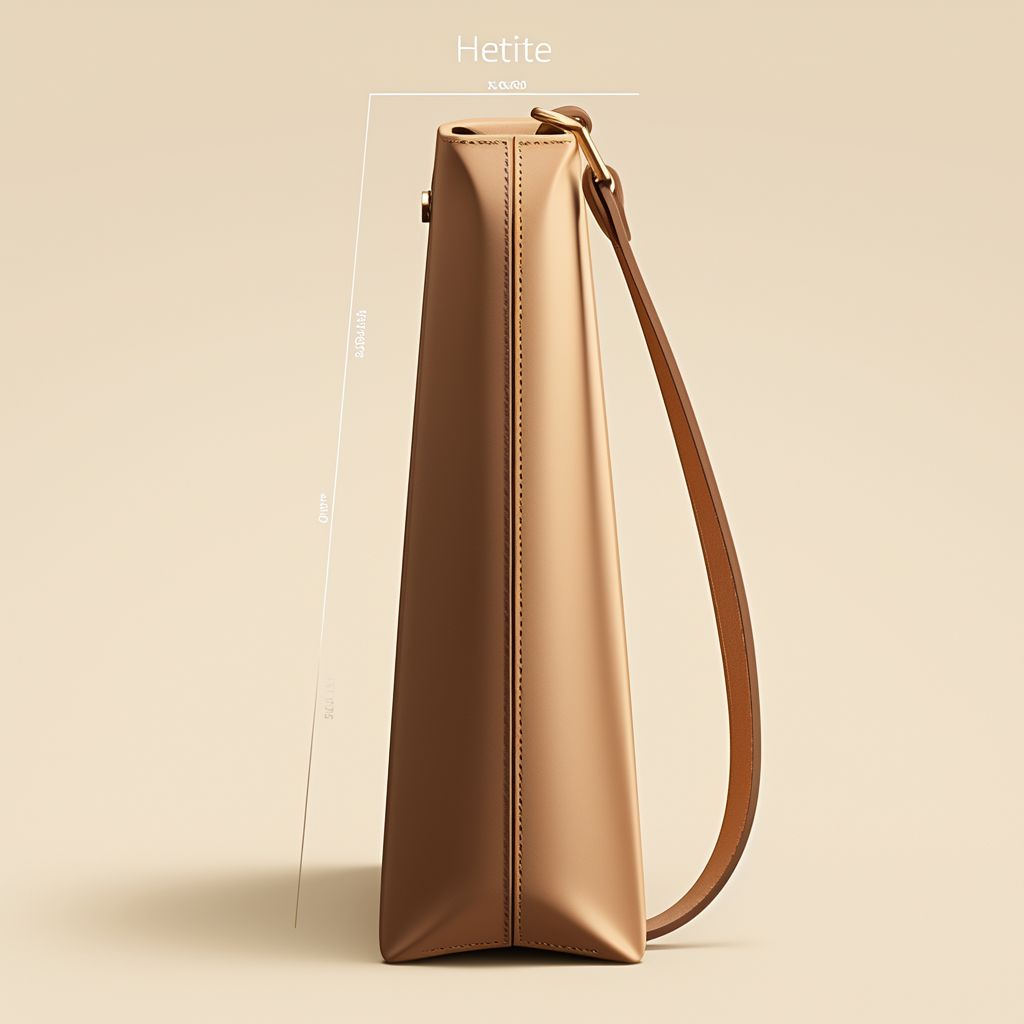
Why it matters: The height of a purse contributes to how much it can hold, especially for items that require more vertical space. For example, tall wallets, water bottles, and even a small tablet may need extra height to fit comfortably.
Tips for accuracy:
- Stand the purse upright to measure its height from the base to the top.
- If your purse is soft or slouchy, gently adjust the structure so that it stands naturally.
Example: A clutch or evening bag typically measures between 4 and 6 inches in height, while a medium-sized purse or crossbody may have a height of 9 to 12 inches.
1.3 Measuring the Width of the Purse
The width of the purse is measured from the front to the back of the bag, going across the middle of the purse. This measurement is particularly important when you need to know how much room is available for items that require depth, such as makeup bags or a small organizer.
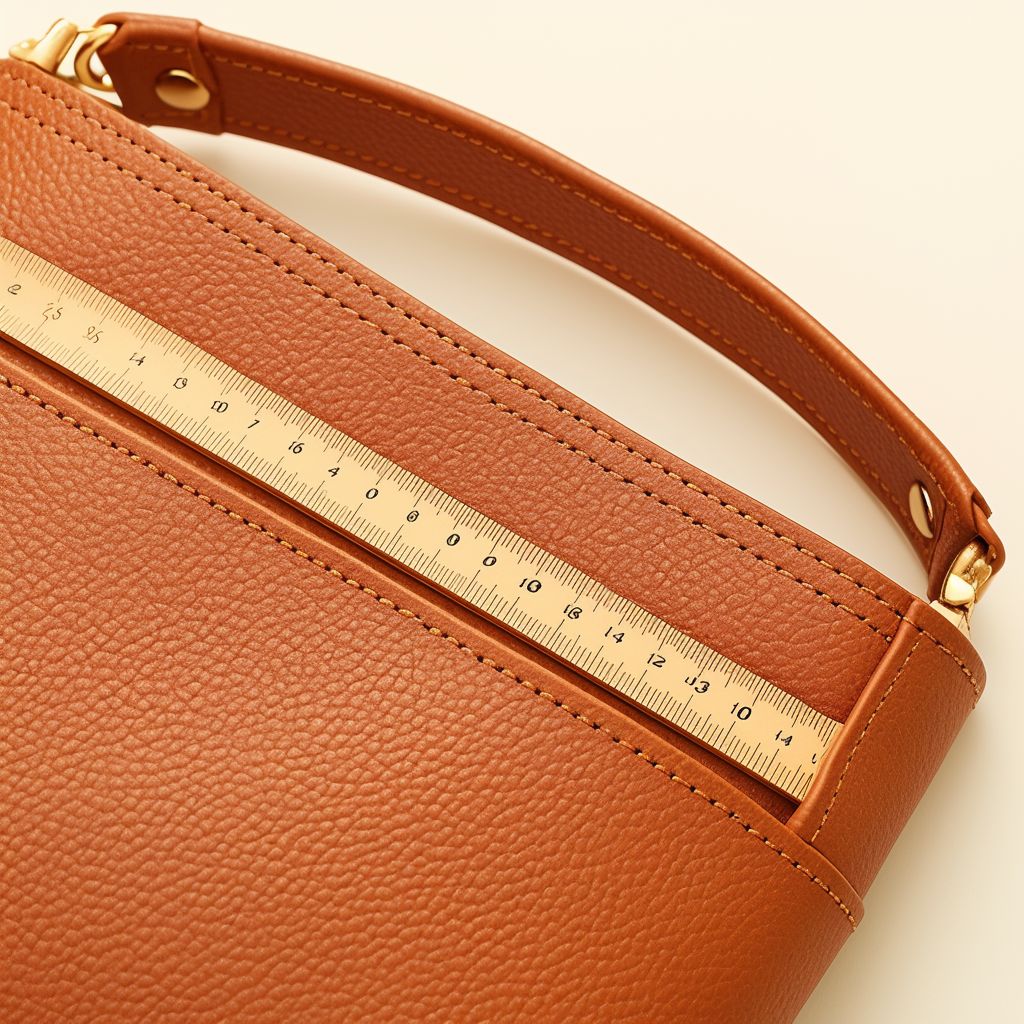
Why it matters: The width of the purse determines its overall capacity in terms of volume. A wider purse can hold more items, making it ideal for those who need to carry a lot, while a narrower purse is better for a minimalist style or lighter packing.
Tips for accuracy:
- Make sure the purse is fully relaxed when measuring, and ensure no external items like scarves or bags are skewing the measurement.
- Measure the middle of the bag for a consistent result, as the width may vary at the top and bottom.
Example: A small handbag or crossbody may have a width of 3-5 inches, while a larger purse or tote bag could range from 6-10 inches in width.
By understanding how to measure a purse's length, height, and width, you can make an informed decision about whether a purse will suit your needs in terms of both size and functionality. Each of these measurements impacts not only the capacity of the purse but also its comfort and practicality when carried.
2. Measuring the Depth of a Purse
In addition to the basic measurements of length, height, and width, the depth of a purse is a critical factor to consider—especially for larger bags or those meant to carry multiple items. The depth refers to the distance from the front to the back of the purse, and it directly affects how much space is available inside for your belongings. Here's why it matters and how to measure it correctly:
2.1 Understanding Depth and Its Importance
The depth of a purse is essentially the third dimension that determines its overall capacity. A deeper purse can hold more items, such as a tablet, a large wallet, or even a small cosmetic bag, without being too bulky or difficult to carry. On the other hand, a shallow purse will have a more compact, streamlined design, making it ideal for carrying just the essentials.
Why it matters:
- Increased capacity: A deeper purse allows for more storage space. This is especially important for those who like to carry a variety of items, from books to snacks, or a small laptop.
- Comfort and practicality: The depth can influence the way the purse sits on your body. Deeper bags, especially when full, can feel heavier, while a more shallow bag might be more comfortable for everyday use but may limit what you can carry.
2.2 How to Measure the Depth of a Purse
To measure the depth of a purse, place it on a flat surface, ensuring that it is in its natural shape. The depth is measured from the front of the bag to the back, which gives you a sense of how much room you have inside.
Steps for measuring depth:
- Lay the purse flat with the opening facing upward, ensuring it is not overstuffed or collapsed.
- Measure from the front edge (the side facing outward) to the back edge (the side that rests against your body when carrying the bag).
Record the measurement at its widest point.
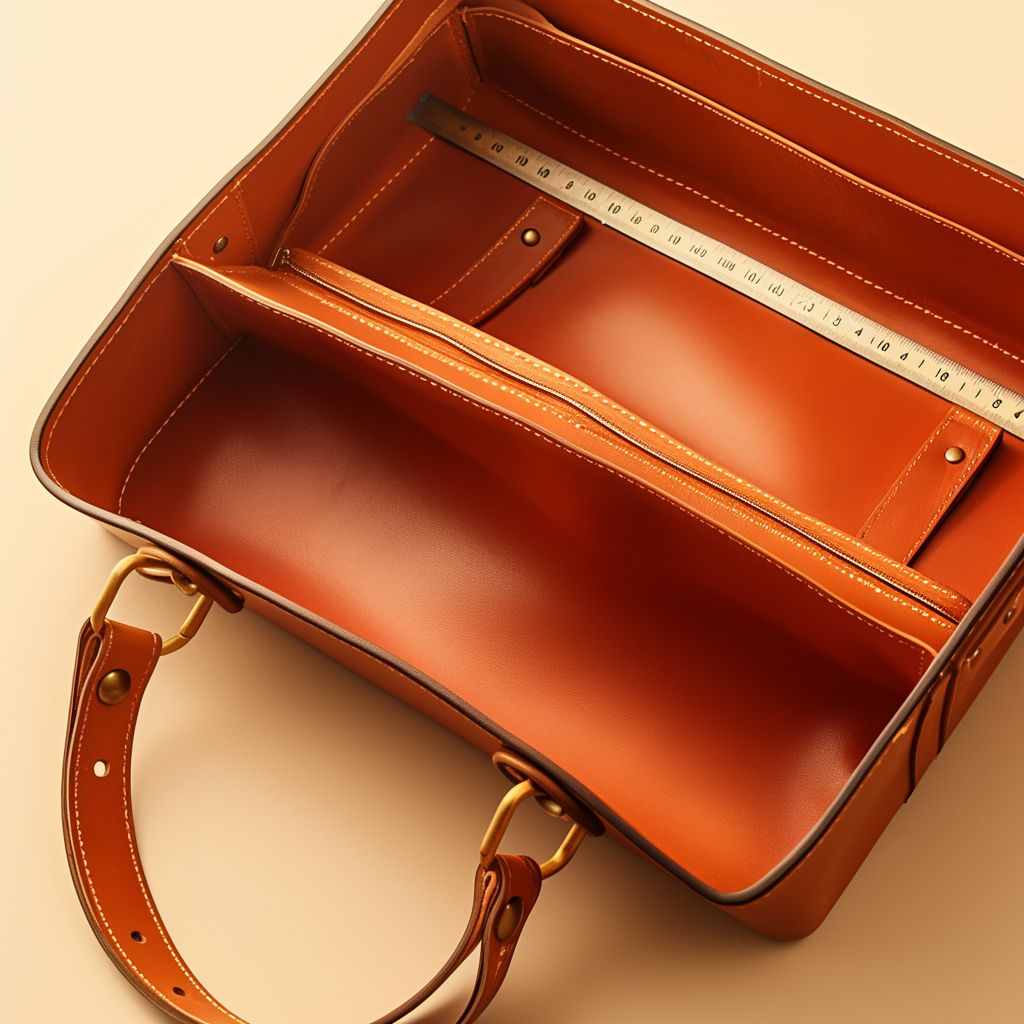
Why it's important to measure correctly:
- Accurate measurement: If your purse is very soft and flexible, the depth may vary depending on how it's filled. It's important to measure when the purse is in its natural shape, rather than when it's stretched or compressed.
- Consider the design: Some purses, like hobo bags or slouchy styles, may appear deep but can lose their shape when not filled, affecting how much they can actually carry.
2.3 Example of Measuring Depth
Let's consider a large tote bag. If you're measuring a tote, you'll likely find that its depth can vary quite a bit based on how stuffed the bag is. A well-structured tote might measure 6–8 inches in depth, while a more relaxed tote could have a depth that ranges from 4–10 inches. This extra depth provides room for a variety of items, making it a great option for daily commuters or anyone who needs extra storage.
For a smaller, more compact bag, such as a crossbody or a clutch, the depth will likely be much smaller, usually ranging from 2 to 4 inches. These bags are designed to carry the essentials, offering a streamlined profile while still providing enough space for items like your wallet, phone, and keys.
2.4 Practical Tips for Measuring Depth
- Use a flexible measuring tape: If your purse is soft or slouchy, a flexible measuring tape will give you a more accurate measurement as it can follow the contours of the bag.
- Measure when the purse is empty: To get the most accurate depth, measure the purse when it's empty or lightly packed, as the depth can expand with the contents.
- Consider the bag's functionality: If you're shopping for a bag to carry specific items, such as a laptop or a large water bottle, make sure the depth is enough to accommodate those items.
By understanding the depth of your purse, you can ensure it offers the right capacity without compromising on style or comfort.
3. Measuring the Handle and Strap Length of a Purse
When selecting a purse, the length of the handles and straps is just as important as the body size. The handles and straps directly impact the comfort and functionality of the bag, influencing how it fits on your body and how easily you can carry it. Whether it's a shoulder bag, crossbody, or handheld purse, getting the strap length right can make a significant difference in how the purse feels when in use.
3.1 Why Strap Length Matters
The length of the handles or shoulder straps determines how the purse sits on your body. A strap that's too short may cause the purse to sit too high or uncomfortably on your shoulder, while a strap that's too long can make the bag hang too low, affecting both the appearance and comfort.
Why it matters:
- Comfort: The right strap length ensures that the purse is comfortable to carry, whether on your shoulder or across your body. It helps avoid strain on your shoulder or back, particularly if you're carrying a heavy bag.
- Fit and Style: Different strap lengths suit different styles and body types. For example, a crossbody strap should be long enough to allow the purse to rest comfortably at hip level, while a shoulder bag's strap should sit just under your arm.
3.2 How to Measure the Length of a Handle or Strap
To measure the length of a handle or shoulder strap, it's important to focus on how the bag will actually be worn. Strap measurements can be taken either from the base where the strap attaches to the bag, or, in the case of handles, from one end of the handle to the other.
Steps for measuring strap length:
- For Shoulder Straps: Measure from the top of the bag where the strap is attached to the point where it rests on your shoulder, including the strap itself.
- If the strap is adjustable, make sure to measure it at the longest and shortest lengths.
- For Crossbody Straps: Measure from one end of the strap (where it attaches to the bag) to the other end. When measuring, ensure the strap is extended fully to get the full length.
- For Handbag Handles: Measure from the point where the handle attaches to the bag, along the curve of the handle, all the way to the other end.
Tips for accuracy:
- When measuring shoulder straps or crossbody straps, try the bag on (if possible) or visualize how the strap should rest on your body. This ensures you account for how the bag will be worn.
- If the bag is adjustable, measure it at both the shortest and longest settings to get a comprehensive understanding of the strap's versatility.
3.3 What to Consider When Choosing Strap Length
- For crossbody bags, the ideal length should allow the purse to rest comfortably on your hip, with the strap hitting just above or at the waist level.
- For shoulder bags, the strap should be long enough to fit comfortably under your arm but not so long that it causes the bag to sit too low.
- For handheld bags, the handle length should be sufficient to comfortably hold the purse in the crook of your arm or carry it in your hand without difficulty.
This section guides you through the measurement of strap and handle lengths, ensuring you choose a purse that not only fits their style but also provides the best comfort and function based on your body type and how they plan to wear it.
4. Measuring Specially Shaped Purses
While most purses follow traditional shapes—rectangular, square, or circular—some designs are more unique and may require special attention when measuring. Purses with irregular or unusual shapes, such as oval, trapezoid, or even asymmetrical bags, present additional challenges in terms of measurement. Understanding how to measure these types of purses properly will ensure you get an accurate idea of their size, capacity, and how they will fit your body.
4.1 Why Specially Shaped Purses Need Different Measurements
Specially shaped purses often don't conform to the standard rectangular or square dimensions, which can make it difficult to take accurate measurements. For example, an oval-shaped bag will have a different length and width than a square one, and measuring a trapezoidal purse requires attention to its varying width at different points.
Why it matters:
- Capacity Understanding: Irregularly shaped purses might not hold as much as they appear at first glance due to their shape. For example, an oval bag might look spacious, but the narrower middle section could limit its capacity.
- Accurate Fit: The unusual shape may impact how the purse rests on your body or how it hangs from a strap. Getting the right measurements ensures that the purse will fit comfortably and look proportional to your frame.
4.2 How to Measure Specially Shaped Purses
For purses with non-traditional shapes, the process involves multiple steps to ensure that all key dimensions are measured accurately.
Steps for measuring a uniquely shaped purse:
Measuring Length and Width:
- For oval-shaped purses, measure the purse at its widest and longest points. Keep in mind that the length and width of an oval purse can vary significantly depending on where you measure.
- For trapezoidal purses, measure the widest part of the top and bottom to determine the purse's overall width, and note the difference in width from top to bottom.
- For asymmetrical purses, measure from one end to the other at the most extreme points to capture the bag's overall length and width.
Measuring Height:
- As with traditional bags, measure the height vertically from the bottom to the top. For purses with unusual shapes, ensure the bag is placed naturally to avoid warping.
Measuring Depth:
- Specially shaped purses may have unique depths depending on their design. For example, a bag with an inward curve may require you to measure along the sides to get an accurate sense of how much room the purse provides.
Handle and Strap Length:
- For special shapes like crescent bags or slouchy hobo bags, take extra care to measure the handle or strap from the point where it connects to the purse to its endpoint. These bags may have curved straps or unconventional attachments, so it's important to check that the strap length is suitable for how you plan to wear the bag.
4.3 Tips for Measuring Specially Shaped Purses
- Use a Flexible Measuring Tape: A flexible tape will give you more accuracy when measuring curved or non-linear sections of the bag, especially for oval or asymmetrical purses.
- Check for Adjustable Features: Many special-shaped purses have adjustable straps or handles. Make sure to measure the strap in both its shortest and longest configurations to get a complete picture of its fit.
- Consider Storage Space: While these bags might look chic, their unique shapes can sometimes limit internal storage space. Take note of how the shape impacts the interior capacity, particularly for deeper or narrow designs.
5. Practical Applications of Measuring Purse Dimensions
Now that you know how to measure the basic dimensions (length, height, width, depth) and the strap lengths of a purse, it's time to understand how these measurements apply in real-world scenarios. Knowing the exact size of a purse is essential when deciding if it will meet your needs—whether you're looking for a bag that fits your daily essentials, a versatile travel companion, or a stylish evening clutch. This section will walk you through the practical applications of purse measurements and how they can guide your purchasing decisions.
5.1 Choosing the Right Purse for Your Needs
Different activities require different types of bags, and choosing the right one often comes down to size. Understanding the dimensions of a purse will help you make an informed decision about which bag will best serve your lifestyle.
Examples of practical purse size applications:
- Daily Use: If you need a purse that fits daily essentials like your wallet, phone, keys, and makeup, a medium-sized purse with a length of around 12-14 inches, height of 9-10 inches, and depth of 4-6 inches will likely work best. Knowing these dimensions helps you ensure that the purse is spacious enough but still compact enough for daily use.
- Work Bags: For a work bag, you'll want a purse with sufficient space to carry a laptop, documents, or other work-related items. A larger tote or satchel, typically with a length of 15-18 inches, height of 11-13 inches, and a depth of 6-8 inches, would be ideal. Measuring the purse ensures it's large enough to accommodate all your items without being too bulky.
- Travel Bags: When choosing a travel bag, size is crucial for both convenience and comfort. A spacious, durable bag with a length of 18-22 inches and a depth of at least 8-10 inches ensures that you can pack everything you need for a short trip while still keeping it manageable.
- Evening or Special Occasion Bags: For a night out or formal events, a smaller, compact purse is often required. A clutch or small handbag with a length of 8-10 inches, height of 5-7 inches, and minimal depth is ideal. It's important to ensure that even though the purse is small, it can still hold essentials like your phone, makeup, and keys.
5.2 Ensuring the Right Fit and Comfort
Knowing how to measure the strap lengths and handle sizes can help you find a purse that is comfortable to carry. The strap length will affect how the purse sits on your body—too long and it may hang awkwardly; too short and it could strain your shoulder or back.
Examples of strap length applications:
- Crossbody Bags: A crossbody strap should typically measure between 45-55 inches, depending on your height and personal preference. This ensures the purse rests comfortably on your hip or slightly across your body.
- Shoulder Bags: For shoulder bags, the strap length should allow the bag to rest just under your arm, typically between 9-12 inches from the shoulder to the top of the bag. This ensures the purse is both functional and stylish without feeling cumbersome.
- Handheld Bags: The handle length should allow you to comfortably hold the purse in your hand without straining your fingers or wrist. The ideal length is typically between 5-7 inches, depending on the style of the bag.
5.3 Comparing Different Purses Based on Measurements
Once you understand how to measure a purse and know the ideal dimensions for your needs, you can more easily compare different bags. Whether shopping online or in person, these measurements allow you to visualize how each purse will fit your requirements.
Practical comparison:
- Side-by-side Comparison: If you're deciding between two similar purses, use the measurements to assess their capacity and fit. For example, a large tote with a length of 16 inches and a depth of 8 inches might seem like a good choice for work, but if it's too wide (over 6 inches), it could be bulky when you're not carrying much.
- Fit Testing: When shopping in-store, you can use the purse's measurements to test the fit. Stand in front of a mirror with the purse, making sure the strap length works for you, and check how the bag feels on your shoulder or across your body.
5.4 Sizing Tips for Online Shopping
For online shoppers, having a clear understanding of purse measurements can help you avoid the common pitfalls of purchasing the wrong size. Many online stores will provide the dimensions of the purse in the product description, allowing you to compare these measurements with your ideal size.
Tips for successful online purse shopping:
- Check the measurements: Always double-check the purse dimensions in the product description before making a purchase.
- Use a measuring tape: If you're unsure about how a purse will fit, take a measuring tape and compare it to the dimensions of your current bag, or use it to get a feel for the size in real life.
- Pay attention to scale: Look for images that show the purse being worn or held by a model, as this can give you a better idea of how it will look and fit in real life.
6. Conclusion
Measuring a purse accurately is essential for ensuring that it meets your needs in terms of both functionality and style. From the basic dimensions of length, height, and width, to the more detailed measurements of depth and strap length, each dimension plays a key role in determining how well a purse will work for your everyday activities or special occasions. Understanding these measurements not only helps you choose the perfect bag but also ensures comfort, convenience, and practicality in your daily life.
Why it's important:
- Informed Decisions: Knowing how to measure a purse allows you to make informed decisions when shopping, whether online or in-store. It helps you avoid the disappointment of a purse that is too large, too small, or uncomfortable to carry.
- Better Fit and Comfort: Accurate measurements ensure that the purse fits your body properly and comfortably, whether you're carrying it on your shoulder, across your body, or in your hand. This enhances your overall experience and prevents unnecessary strain.
- Maximized Utility: By understanding the dimensions of different purses, you can select one that fits your personal style while also providing the right amount of space for your essentials. Whether you're choosing a compact crossbody or a roomy tote, knowing the right size for your needs makes all the difference.
In conclusion, the simple act of measuring a purse before purchasing it can save time, money, and frustration in the long run. Whether you're looking for a practical bag for daily use or a stylish statement piece for a night out, understanding how to measure a purse will help you find the perfect fit, every time.
Appendix
To help you further understand purse sizes and how they compare to everyday needs, here's a reference chart with typical purse dimensions. This chart includes some of the most common types of purses, their dimensions (length, height, width, and depth), and their intended uses.
| Purse Type | Length (inches) | Height (inches) | Width (inches) | Depth (inches) | Ideal Use |
|---|---|---|---|---|---|
| Small Crossbody | 8 - 10 | 6 - 8 | 2 - 4 | 2 - 4 | Everyday essentials, minimal carry |
| Medium Crossbody | 10 - 12 | 8 - 9 | 3 - 5 | 3 - 5 | Daily use, fits phone, wallet, keys |
| Clutch | 7 - 9 | 4 - 6 | 1 - 3 | 1 - 3 | Evening or formal events |
| Small Handheld | 8 - 10 | 5 - 7 | 3 - 5 | 3 - 5 | Small essentials, night out |
| Tote Bag | 14 - 18 | 10 - 14 | 5 - 7 | 5 - 7 | Work, shopping, travel |
| Large Tote/Shopping | 18 - 22 | 12 - 16 | 7 - 10 | 6 - 8 | Travel, office, shopping |
| Satchel | 12 - 16 | 9 - 12 | 4 - 6 | 3 - 6 | Work, casual, versatile |
| Backpack | 10 - 14 | 14 - 16 | 5 - 8 | 6 - 8 | School, casual, travel |
| Bucket Bag | 10 - 12 | 12 - 14 | 6 - 8 | 6 - 8 | Casual, fashion-forward, spacious |
How to Use This Chart:
- Length: Represents the horizontal measurement from one side of the bag to the other (left to right).
- Height: The vertical measurement from the bottom of the bag to the top.
- Width: The measurement from the front to the back of the bag when viewed from the side.
- Depth: Often used interchangeably with width but specifically refers to how "deep" the bag is when measured from front to back.
Choosing the Right Size:
- Use this chart as a general guide for selecting the right size based on your needs. For example, if you need to carry a laptop and documents, a Large Tote or Satchel with more depth and height might be ideal. If you're just looking to carry a few essentials for a night out, a Clutch or Small Crossbody would be a better fit.
- Always check the specific measurements of a purse before purchasing, especially when shopping online. Many brands provide size details on product pages to help with decision-making.

.webp)



